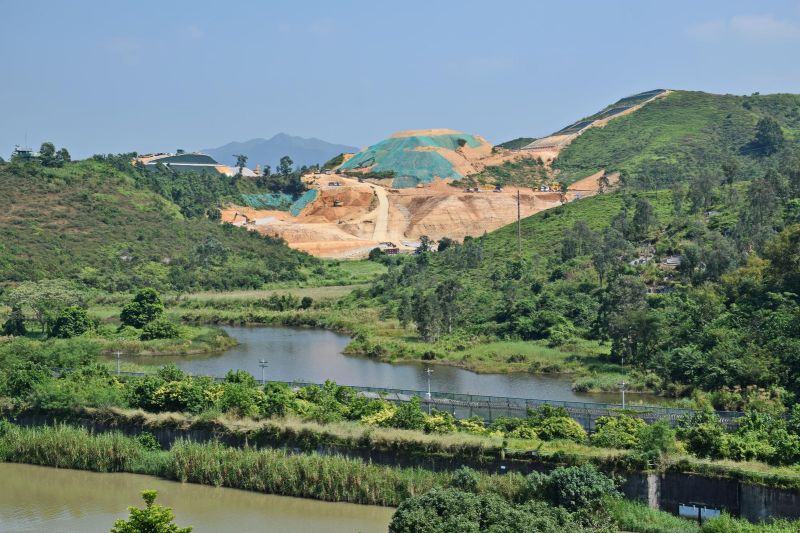Shen Jun
Cemetery
People often say that the things that influence someone’s life are “first, fate; second, luck; third, fengshui; fourth, good deeds; and fifth, one’s studies.” These are so widely accepted that it almost feels possible to develop techniques for controlling them. Imperial palaces and mausolea, as well as family homes and ancestral temples, had to be considered equally carefully, because there is a long-standing belief in Chinese culture that, when the ancestors are at peace, their descendants will be blessed and protected.
Modern enlightenment has dispelled these traditional beliefs, and fengshui has been simplified from the study of heaven and earth to a practical formula. Even if everything could be calculated, people are constrained by their reality. In a place with land prices as high as Hong Kong’s, ordinary people must spend half their lives working to buy a place to live. If they luck into public housing and discover the apartment contains some bad fengshui, they can comfort themselves with the idea that fengshui exists only if they believe it does.
However, if finding a home for the living is difficult, finding a place to bury the dead is even more fraught. The seventeen public cemeteries in Hong Kong have waiting lists that average five years, and families are unable to choose anything about the location or setting. A columbarium niche at a private cemetery could easily cost hundreds of thousands to upwards of a million HKD.
As the Greater Bay Area re-defined the vision for the region, more Hong Kongers have chosen to move north and set up shop. There is both housing for the living and a place for the dead. In 2010, the Hong Kong SAR Government began looking for land, and three years later it proposed the construction of the Sandy Ridge Super Cemetery City, near the Luohu border crossing south of the Shenzhen River. It would provide a funeral home with thirty reception rooms, a crematorium with ten furnaces, and 200,000 columbarium niches. Whether it was viewed as a Greater Bay Area vision or a Hong Kong idea, this Super Cemetery City proposal naturally ran into intense opposition from Shenzhen residents. Some said that what is deemed “remote” should be re-considered in the Greater Bay Area context.
This “super” project, which was originally slated for completion in ten years, was abandoned in 2023, but there was another way for the ancestors to move northward. According to Hong Kong government regulations, families can apply to the Food and Environmental Hygiene Department for a “Permit for the Removal of a Dead Body from Hong Kong,” which allows them to cross the border. Greater Bay Area businesses have developed a continuous stream of funeral services, arranging the journey for the deceased across the border and trips for the mourners to tend to the grave. We do not know if re-defining borders will resolve practical issues for ordinary people, or even strengthen regional familial ties, but it seems to have created a subterranean Greater Bay Area.

Sandy Ridge Super Cemetery City construction site, 2019
Image courtesy Wikipedia user Baycrest